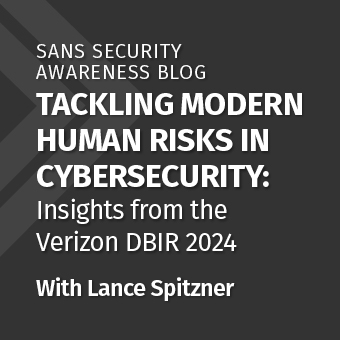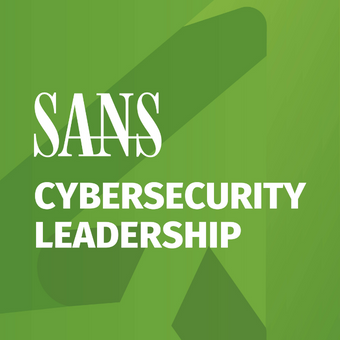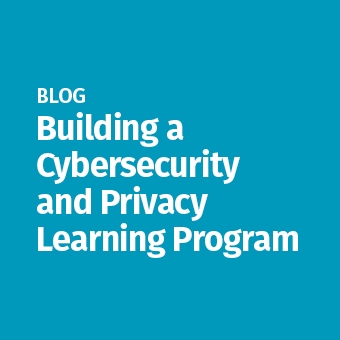I was inspired by a thread started by Cathy Click, head of Security Awareness at FedEx. She asked a fantastic and inspiring question, what would the perfect Security Awareness / Culture team look like? If I truly wanted to manage my organization’s human risk, who would I need to manage that effort? I felt this was a fantastic question and wanted to share my perspective. I fully realize not all organizations have the resources to support such a diverse team I describe below, but this is something I would love to see organizations strive for.
The Team Itself
First, managing human risk is a team effort. Data driven reports for over the past three years repeatedly demonstrate that people have become the primary attack vector - the human element is involved in 75-85% of all breaches globally. To address what is in many ways the greatest risk to organizations today, we need a team of people.
- Full-time Lead: First and foremost, whomever is in charge of your program should be dedicated full-time to this effort. If you assign your program to someone who already has multiple other responsibilities, at best your effort will be compliance focused. Yes, you will check the box but no you will not be able to engage and secure your workforce. Step number one, whoever oversees your human risk program needs to be dedicated to it full time.
- Report to CISO: Second, that individual and their team needs to be part of the security team. Managing human risk is part of managing your overall cyber risk, as such we need to be part of the security team. If your program is part of and reports to departments such as Audit, Privacy, Legal, Human Resource or Training then your effort will be siloed from the security team and be a compliance focused initiative. When working with organizations on managing human risk one of the first things I ask is where does their Security Awareness / Culture / Human Risk team report? Even better, it’s important that this team report directly to the CISO. The more likely the team reports directly to the CISO, the better they can help all the security initiatives through the lens of people.
Key Members of the Team
As for members of the team, here are the key skills I see as important to managing human risk. In a perfect world you would have a specific team member with each of these skills, dedicated full-time to the human side of cybersecurity. More likely you have certain individuals that share several of these skills.
- Communications: First and foremost, securing your workforce starts with engaging your workforce. If your workforce is not listening to you (a common problem for security) it’s very hard to train and enable them. Communications is a field specializing how to engage people in their own terms. One option I see organizations take is actually having someone from their Communications department assigned to work with the security team, in some cases they are even embedded into and assigned to work with the security team full time. Their job is to take whatever the security team wants to communicate (new security policies, tool rollouts, security announcements and updates, etc.) and translate it into simple terms that anyone can understand and act on. I often see people with backgrounds in Marketing, Journalism or Public Relations also in this type of role.
- Organizational Change: You need someone that understands how people think and act, who has expertise in human nature. However instead of having someone who specializes in what drives behavior at the individual level, consider an expert in what drives peoples behavior at an organizational level. This field of study is called Organizational Change. These are professionals that understand fields such as behavioral economics, behavior models, influence and human psychology. But they are also experts in change models such as ADKAR that provide a framework for changing peoples behaviors and beliefs at an organizational level. These are the experts in architecting your security program to work with human nature, not fight human nature.
- Instructional Designer: Adult Learning Theory is the study and expertise in how adults learn. Instructional Designers are experts in applying that knowledge to design, develop and implement training that drives your desired outcomes. These are your experts in leveraging such as the ADDIE framework, Learning Objectives and the Kirkpatrick Evaluation model. They help you design training that engages, motivates and enables people to exhibit the skills and behaviors you want.
- Data Analytics: Metrics are a powerful tool to help you not only manage your program but demonstrate its value to leadership. You most likely want to ally yourself with someone that has an ability to take all your different data points and provide actionable metrics you can both leverage but also share with leadership.
- Project Manager: You need someone with the ability to help manage all of this, to include developing partnerships with other departments.
- Additional Leads: You may also need to bring on board additional professionals to help with specialized projects, such as someone to lead a Security Champions initiative, Phishing Simulation program or perhaps specific outreach efforts such as a DevSecOps training for your Developer.
Notice a skillset we don’t emphasize here? Cybersecurity. If you are focused on managing human risk, wouldn’t you want people that are experts in risk? Absolutely! Fortunately, you already have those experts, the rest of your security team. That is why it’s so critical for your human focused team to partner with and be part of the security team. Your security team can help to identify your organizations top human risks and the behaviors that manage those risks. Your security awareness / culture team focuses on motivating and enabling your workforce to exhibit those behaviors. It is this team effort that is key. In fact, this takes us to the last section of this post, partnerships.
Key Partnerships
Attempting to engage and secure your entire workforce is an organizational effort, and it requires strong partnerships with other departments within your organization. While we could list numerous departments, these are the key I like to start with.
- Security: Securing your workforce starts with security, and that means a strong partnership with your entire security team. Some of the key sub-groups that your human risk team will need to work with include your Cyber Threat Intelligence (CTI) team, your Security Operations Center (SOC) and Incident Response. Teams like these provide critical data and intel on what the greatest human risks are, enabling you to prioritize and focus on managing your top human risks. In addition, your human risk team can also assist your security team. For example, helping your security team to create security policies that are easier to follow and simplifying communications so your workforce can actually understand what your security team is communicating.
- Human Resources: HR is critical for several reasons. First, they often control the process of on-boarding new employees, to include any new training, which most likely include security training. While we all know that your initial employee training is not going to magically make anyone secure, those first impressions can drive peoples’ perceptions about security at your organization. In addition, HR are often the experts in culture and can help guide your team as you go beyond just securing peoples’ behaviors but driving and embedding a strong security culture.
- Communications: Similar to what we covered earlier, communications is the cornerstone to securing your workforce. Not only does your security team need to have strong security skills, but a trusted partnership with the Communications department enables those communications to effectively get out.
I would love to hear from you on what is missing or your suggestions. How can we improve the Dream Team when it comes to Managing Human Risk? If you would like to learn more about managing human risk, consider the three-day SANS MGT433 Managing Human Risk course.




